Modern Soul(s): Vulfpeck collaborator Antwaun Stanley connected with former My Dear Disco/Ella Riot leader Tyler Duncan for a new EP

Antwaun Stanley's powerful voice sounds like it came from another time, cast from the deep grooves of a 1960s R&B record.
That's why it's always a treat when the Ann Arbor singer appears as a featured vocalist with jam-funk-soul stars Vulfpeck or with one of the other bands for which he's associated.
But a new EP, Ascension, shows Stanley taking a big step forward as a solo artist. The record was made in collaboration with Ann Arbor multi-instrumentalist and producer Tyler Duncan. His impressive resume includes leading the Irish crossover group Millish and the dance-rock project My Dear Disco, aka Ella Riot, as well as producing songs for Carly Rae Jepsen and Lake Street Dive.
The EP isn’t technically Stanley's solo debut—he released a gospel album a few years back—but it does showcase his artistic voice in a new way with a modern R&B sound.
Ascension features three fully developed songs and three largely instrumental interludes. “Speed of Night” recalls old-school R&B, while “Tightrope” offers inspiration through James Blake-like soul-tronica. “Lost in Translation” is the EP's stand-out with its addictive groove, great singing, strong lyrics, and a crackling horn section.
Stanley answered a few questions about the new EP and his other work.
Kim Fairley’s Memoir "Shooting Out the Lights" Tells the Story of Navigating Her First Year of Marriage and an Unwanted Guest
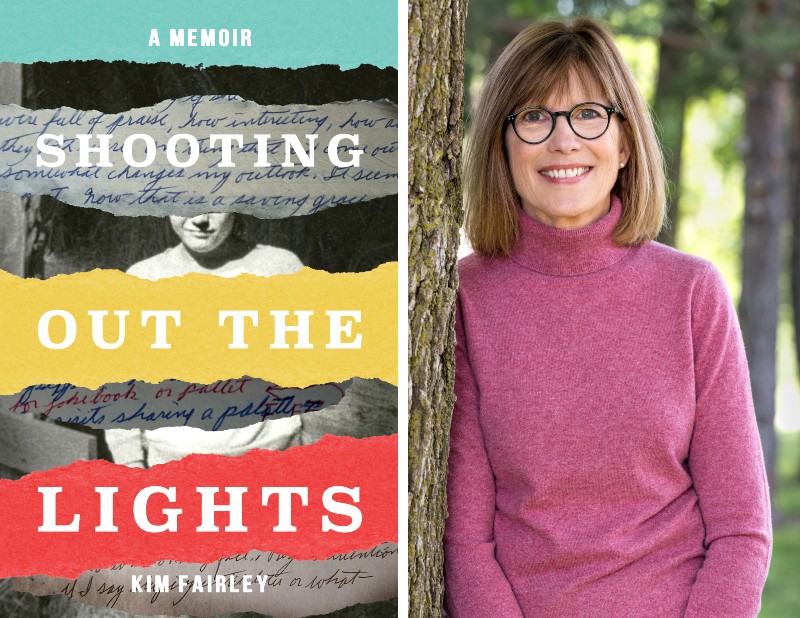
Ann Arbor artist and writer Kim Fairley recalls the early days of her marriage to Vern Fairley and a visit from an unwelcome guest in her new memoir, Shooting Out the Lights. This fast-moving book focuses on what it was like to start a marriage amidst a big age gap, the aftermath of tragedy, and the contentious circumstances of an unrelated child who comes to stay with the couple. Fairley tells the story with humor and tenderness.
While Fairley quickly becomes pregnant at 25 after they married in 1982, the memories of Ben, Vern’s son who died in an accidental shooting, haunt them. Vern agrees to take in Stanislaus, an 11-year-old son of a friend, and their newlywed days are interrupted. The unwanted responsibility forces the couple to face what happened in the past and look ahead to their growing family.
A relic of the past is Ben’s bedroom, which had remained largely the same since his death. Fairley considers cleaning out the room in preparation for the new baby. She reflects on the task and its larger implications:
Does it matter to leave a legacy? My mother, jokingly, always said she wanted her endless pile of laundry done before she died. My father wanted to be missed by my mother. Maybe all that mattered was the here and now. Nobody two hundred years in the future would care a whit about any of us. It was the reality of Vern’s age and the recognition that he wouldn’t live forever that was getting to me.
Fairley is forced to confront change and mortality amidst the joy of starting a family, and she looks back with the clarity of time. She adds, “Vern had contradictory impulses, as we all do, about whether to hang on or let go, preserve or move forward.” The dilemma is relatable, but it doesn’t make the choice any easier.
Shooting Out the Lights is Fairley's second book. I interviewed her about what it was like to write this story.
Carmen Bugan's essay collection articulates how poetry is an instrument of resistance
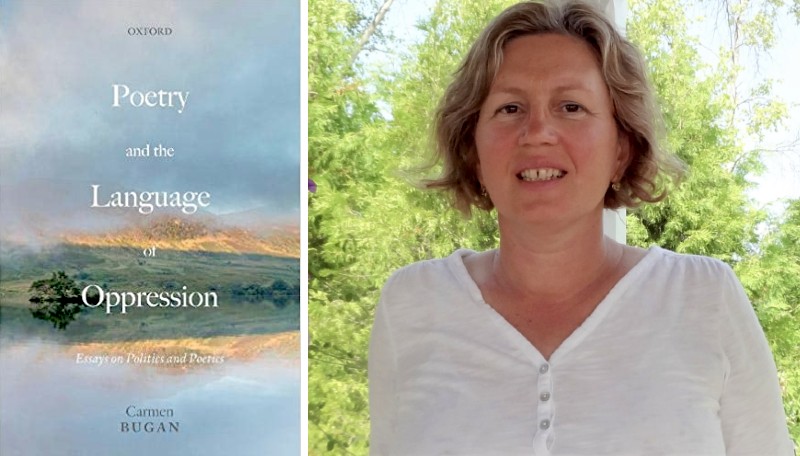
Carmen Bugan wields writing to understand and push back against the oppression and repression that she suffered while growing up in Romania in the 1970s and '80s and observed in her life and research. In her new book, Poetry and the Language of Oppression: Essays on Politics and Poetics, she writes:
This personal background experience gave me a first-hand knowledge of the power of language—how it can be used as an instrument of oppression and how it can be used as an instrument of resistance. That knowledge has shaped my voice as a writer.
Language is on the one hand very damaging and on the other very powerful. Bugan’s writing demonstrates her resilience and courage to nevertheless express herself when facing oppression.
Erin A. Craig’s "Small Favors" conjures dark forces in a reimagining of Rumpelstiltskin
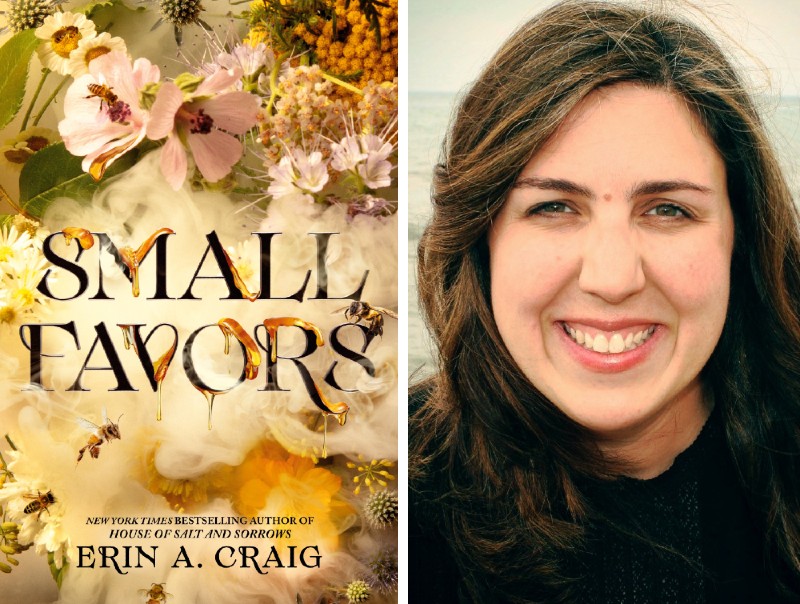
The cover of YA author Erin A. Craig’s new novel, Small Favors, looks deceptively bright with flowers, bees, and honey dripping off of the letters in the title. Yet what sounds too good to be true just might be, as character Ellerie Downing learns in this reimagining of the fairy tale, Rumpelstiltskin.
The setting of Amity Falls is a small, remote settlement in the Blackspire Mountains where neighbors rely on each other for their various skills, from carpentry to poultry farming. The Downing family are apiarists. They produce honey and also bake delectable honey cakes.
This well-balanced community starts to fragment when people are killed on trips out of town, crops go bad, and accusations of wrongdoing multiply. Initially thought to be an issue with oversized wolves, it becomes clear that something more sinister is stirring and seeking to control the people, something that gives gifts in exchange for favors.
Ellerie’s twin brother, Sam, describes an early encounter with the dark creatures to Ellerie:
U-M Professor David Potter looks at history and politics to understand radical change in his new book, "Disruption"
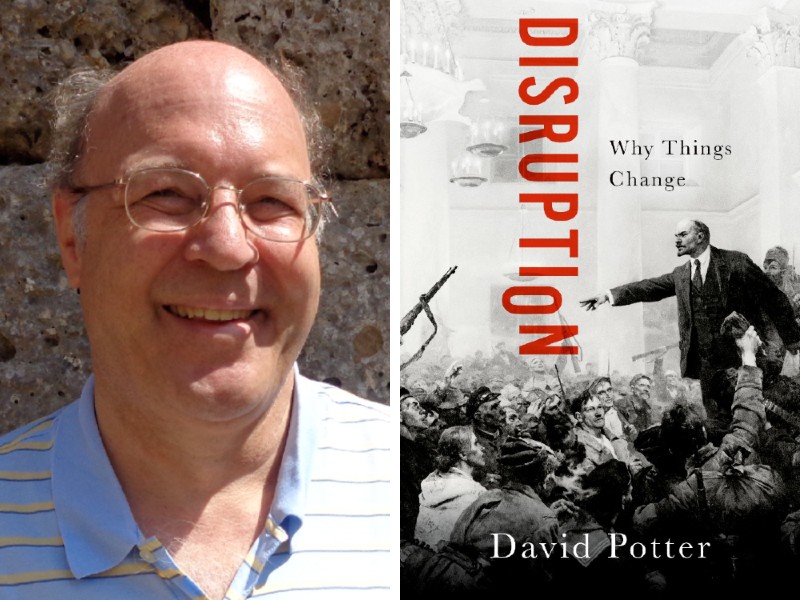
“How do things change?” asks David Potter, a University of Michigan professor, in his new book, Disruption.
This question is the basis for his in-depth examination of five groundbreaking periods in history: Christianity’s growth, the rise of Islam, the Protestant Reformation, popular sovereignty, and the political theorists Karl Marx and Herbert Spencer. The five chapters collectively span thousands of years and Potter sews together history, biography, and political thought to illustrate how ideas disrupt existing beliefs and structures.
This kind of radical change, according to Potter, arises from fringe ideas that go against the existing state of affairs with a thought leader at the forefront. Many centuries ago, political structures that are foundational to government as we know it now had yet to be defined. For example, amid the rise of Islam when Ali ibn Abi Talib, a relative of the prophet Muhammad, was assassinated in 661, Potter writes:
Kenyatta Rashon explores "The Art of Keeping It Real" on her accomplished debut album

Ypsilanti singer and songwriter Kenyatta Rashon showcases a polished R&B sound spiced up with some hip-hop accents on her terrific debut album, The Art of Keeping It Real.
Rashon has a distinctive singing voice, both expressive and powerful. And her songs are uniformly strong, with memorable melodies and vibrant lyrics. “YoFi” and “W.rong” express regrets for lost love, while “I am” and “H4L” are anthems of self-empowerment. The single “Free” establishes a great summer listening vibe over wistful and wise lyrics: “Some things could change and some things could not / But I made peace with the things I got / I’m free”
Rashon answered a few questions about the album for Pulp.
Bill Edwards made the most of the pandemic era with an ambitious new album, "Whole Cloth"
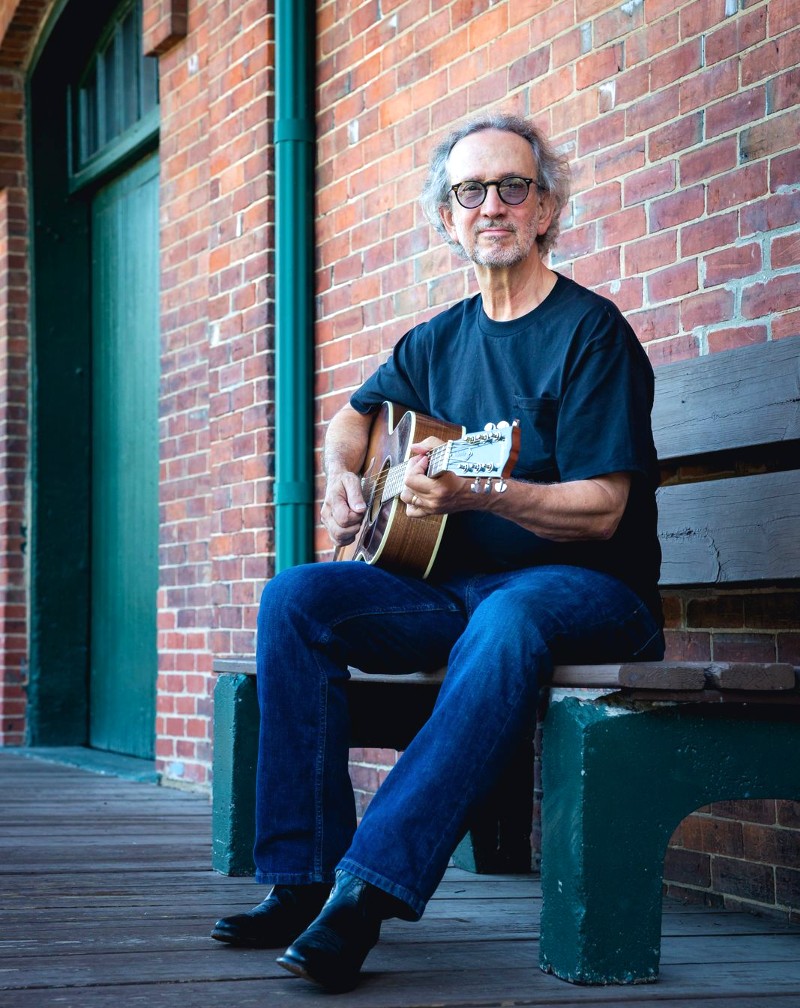
Where some musicians may have understandably felt limited by the constraints of the COVID-19 pandemic, Ann Arbor singer-songwriter Bill Edwards took it as an opportunity.
Unable to collaborate with other musicians, Edwards decided to record full-band music all by himself—playing instruments both familiar and new, and learning software packages as well. He wrote, recorded, and started the process again, ultimately finding himself with 30 fully finished songs.
The resulting album, Whole Cloth, is a major achievement, filled with gems about chasing love, finding love, losing love, and more—and shifting among various musical subgenres that all fit under the broad umbrella of Americana, from old-time country to roots rock to western swing.
While nearly all the songs concern relationships in one way or another, “You’re Still Here” is a touching ode to a friend long gone, while “Ain’t Wet Yet” finds some humor in the politics of trickle-down economics and “Sing Me” praises the power of music itself.
Edwards, who was already skilled on multiple instruments, uses his versatile abilities to great effect throughout the album, such as a warm acoustic guitar solo on “Slow Down the Moon” and wistful fiddle on “Billy’s Lament.” The latter is one of three instrumentals on the album, crafted while Edwards had a paralyzed vocal cord— even that couldn’t slow down his creative process.
He's performing a free-admission album release concert on Aug. 27 with Lauren Crane opening the show.
"I’ll play a short selection of my favorite older songs, and then dig into the new record," Edwards said. "For the latter, since the arrangements rely heavily on drums and a variety of lead instruments, I’ll play acoustic guitar and sing to tracks from the album. I’ve got them recorded in my looper pedal, and it works quite well."
Edwards agreed to answer some questions about the new album.
"Whip" It: Nadim Azzam's new YouTube show cruises with Michigan musicians

[This story was originally published on December 9, 2020. The entire first season is out now on YouTube and the show is having a concert at The Blind Pig on Saturday, September 11 featuring everyone who has appeared in the series so far: Dani Darling, Pariis Noel, D. Vaughn the Illest, Mirror Monster, KI5, and host Nadim Azzam.]
Artists performing songs being driven around in a car by a congenial host. Sound familiar?
But Whip Jams isn't Carpool Karaoke.
Host Nadim Azzam doesn't fuss around with wacky comedy. He gets right to the point with his guests, reciting a short bio, picking the musician up in his car, letting them perform, and concluding with a brief interview.
The first episode of this YouTube show clocks in at 4 minutes, 57 seconds. A quick ride indeed.
In the Whip Jams debut on December 9, Ann Arbor's Ki5 performs a song in Azzam's vehicle by sampling his voice with the Boss RC-505 Loopstation sitting in his lap. That kind of compact setup works fine for him, but some future episodes will feature artists holding acoustic instruments—might get a little cozy in Azzam's Honda Civic.
U-M Lecturer Philip D’Anieri's Book Maps the Appalachian Trail Through the Stories of Its Developers
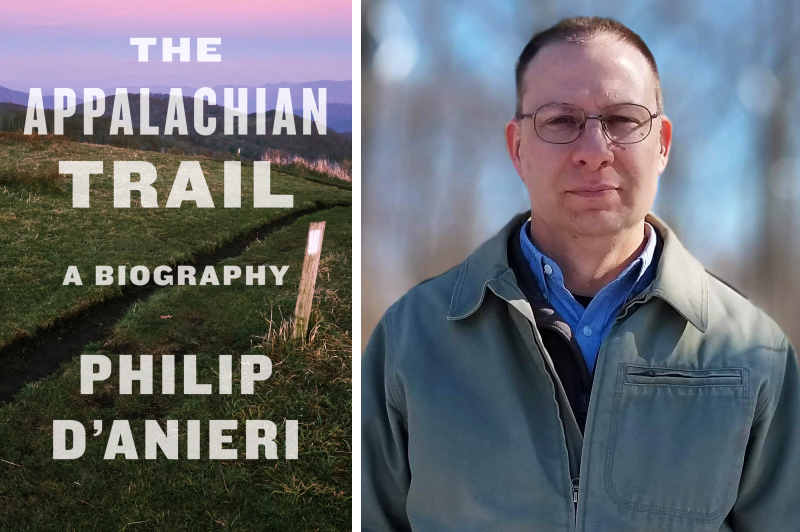
The 2,000+-mile Appalachian Trail spans the eastern United States from Georgia to Maine, traversing 14 states in total. The trail looms large in the consciousness of many people, from sightseers to thru-hikers. But how did such a major trail get created?
U-M lecturer Philip D’Anieri shows how the Appalachian Trail could not exist without the significant effort and devotion of instrumental individuals over time in his new book, The Appalachian Trail: A Biography. He provides not only facts about the contributors’ lives but also insights into who they were and what motivated them to contribute to the AT. D’Anieri also examines how the AT forms and fits into our views of nature.
Each chapter outlines how a different person (or people) helped shape the trail’s establishment. The trail’s development occurred alongside the growth of the United States, causing conflict when the trail was at odds with roads, politics, or interests of private landowners. The story begins with Arnold Guyot’s mapping of the Appalachian Mountains, as published in an article in 1861. In subsequent years, various individuals explore and build miles of trail, from the librarian Horace Kephart to Benton McKaye’s coining of the name “Appalachian Trail” in the early 1900s.
The first thru-hikers, Earl Shaffer and Emma Gatewood in 1949 and 1955, respectively, influenced the use of the AT. Another chapter depicts Senator Gaylord Nelson, who introduced legislation to federally protect the trail in the 1960s and also founded Earth Day in 1970. The book goes on to describe the challenges and successes of the National Park Service, which sought to obtain land along the AT’s corridor. Bill Bryson’s bestseller, A Walk in the Woods published in 1998, drew many to the trail, as D’Anieri writes in the penultimate chapter.
At the start and end of the book, D’Anieri reflects on the Appalachian Trail’s meaning in the public consciousness and his own engagement with the trail. In the introduction, he writes:
The places we choose, and the way we then develop and manage them, tell us a lot about what we are asking from nature, what exactly we think we are traveling toward and escaping from, where we want to strike the balance between maddening civilization on the one hand, and heartless nature on the other.
This question sets the stage for studying various individuals’ involvement in the AT’s construction.
D’Anieri finishes the book by discussing his adventures in driving the length of the trail and hiking short sections. His points that the Appalachian Trail is for everyone, and that there is much value to walking rather than driving, offer a current take on the trail. There is a great opportunity to interact with nature via the AT, to step away from our existing lives for a different outlook.
I interviewed D’Anieri to learn more about his book and the process of writing it.
Zilka Joseph’s new chapbook, "Sparrows and Dust," finds parallels between humans and birds
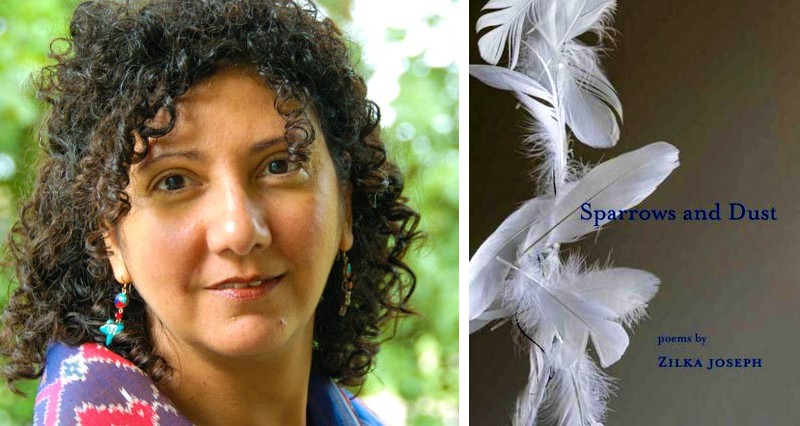
What would it be like to be a bird?
Ann Arbor poet Zilka Joseph’s new chapbook, Sparrows and Dust, imagines the parallels between human lives and the patterns of birds.
Birds become a constant in the poet’s life, from India to Michigan. Like the migrations of birds from place to place, the last poem begins with a description of the vastness of our collective lives and the places where we spend them:
Between Worlds,
and in worlds within worlds,
we live.
Throughout Joseph’s poems, all creatures are trying to make their way in the different places that form the settings for their lives. There are the geese and the poet observing them, and they are all distressed after five eggs disappear one spring. Yet being able to watch that drama play out is the result of a happy milestone of moving into a new condo for the poet.
Another poem, “Negative Capability,” wonders at flight:
open sky sun so night comes stars wheel
we spiral higher become air is this
the bird way
Arrivals and departures, and worlds appearing or disappearing, happen through flying. A hummingbird visits in another poem, “So Much,” to get “one more hit of her liquid / sugar high ill- / usion on which / her flight / depends.” Slowly we piece together what flight might be like, what sustains it, and what possibilities it offers.
Joseph’s poems sometimes alight on the birds themselves and other times show birds as metaphors, such as in the poem “Mama, Who’d Have Thought,” which speaks to the poet’s mother on how birds of prey are not a threat to safety but how police shootings and detaining children at the border are. In fact, many of the poems offer reflections on the poet’s parents.
These poems hold many moments for the admiration of nature. “Fall Now” describes that “we count kestrels overhead / one monarch sits in my palm.” Joseph asks us to notice and appreciate.
Joseph is a creative writing teacher, editor, and manuscript coach in Ann Arbor. I interviewed her about Sparrows and Dust, her teaching, and what she’s working on next.


































